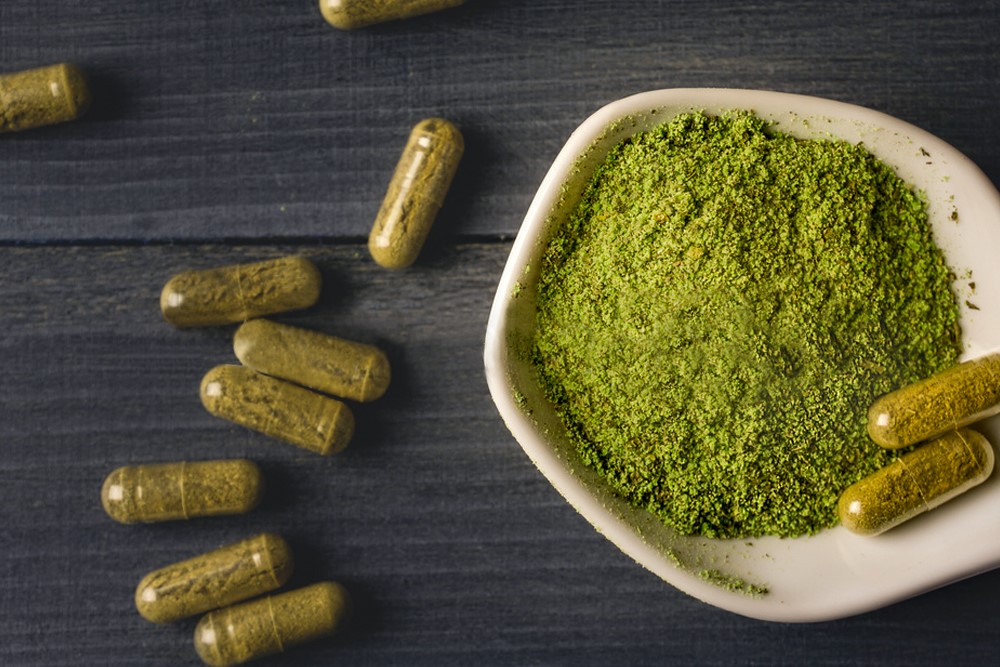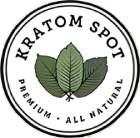
The world of kratom can be a beautiful affair, offering kratom users a boost in their daily health regimens. However, the kratom community can also be dizzying and confusing; there’s just so much information out there, it’s difficult for new users to know what’s what. Kratom Spot has taken the time to develop a kratom user guide, complete with everything new users need to know before starting on their kratom journey!
But before we begin, just what is kratom? Kratom is an extract derived from the Mitragyna speciosa, a tropical evergreen tree in the coffee family, believe it or not! This extract is commonly sold in the form of kratom powder because it’s easy to ingest or make into tea, easing administration into the body.
And there isn’t just one strain of kratom, either. We’ll dive more into kratom strains as part of this kratom user guide, but there are three popular kratom strains to be aware: red, green, and white vein kratom strains.
Kratom has been used as a medicinal herb in Southeast Asia for thousands of years. In the United States, kratom is legal but only became popular in recent memory. The Food and Drug Administration (FDA) doesn’t yet know how to classify the plant extract, so kratom products like kratom powder are currently unregulated by the FDA.
Because these products are unclassified, new kratom users may not know where to start. This can be dangerous. We don’t want new users taking high doses of kratom unknowingly, or even taking a strain of kratom that doesn’t work for their lifestyle. This kratom user guide aims to inform those who wish to use kratom but don’t know how or where to begin.
1. Start Small
When taking any new substance, it’s always important to start small. For new users, your body has yet to adjust to kratom powder, and you don’t know how your body will react. Starting with a small dose will allow your body a chance to adapt to kratom. Plus, you can always take more if needed.
Unfortunately, Kratom Spot is not allowed to offer a kratom dosage guide or to tell you exactly how much kratom to dose. Like we said, kratom is legal but has yet to be regulated by the FDA. As such, we are restricted by a number of marketing limitations.
For more information regarding dose, you can always contact the American Kratom Association (AKA), the most vigilant pro-kratom legislative and educational group in the country. In addition, if you are worried about dosing kratom yourself, you can opt for pre-filled, pre-dosed kratom capsules. These capsules contain a pre-measured amount of kratom so that you don’t have to measure out loose kratom powder yourself.
New users should always strive to avoid overly high doses of kratom. If taken correctly, kratom has little risk. If taken in high doses or taken in a way inconsistent with recommended dosage methods, kratom can induce any number of unwanted side effects, including an upset stomach.
Until it’s okay to offer a proper kratom dosage guide, this is the best general statement we can offer.
2. Never Take Kratom On An Empty Stomach
For new kratom users, it’s important to reduce the number of side effects in order to determine if kratom is right for you. Side effects can be distracting or potentially lessen the kratom experience. As such, new users should never take kratom on an empty stomach.
Many substances, including many medications, can cause gastrointestinal issues if taken on an empty stomach. These symptoms may include:
- Nausea
- Vomiting
- Stomach Irritation
- Heartburn
- Acid Reflux
Some untrustworthy kratom user guides may suggest that ingesting kratom with an empty stomach increases the substance’s efficacy. However, these claims should be ignored because you do not want to experience a myriad of unwanted, sometimes debilitating side effects.
3. Get to Know Your Kratom Products & Strains
Perhaps one of the most confusing aspects of kratom for new users is the variety of available strains and products. What is red vein kratom, and how does it differ from Maeng Da? What’s the difference between kratom powder and kratom extracts?
Fear not, for this kratom user guide will teach you everything you need to know about these products and strains! Let’s get started with each strain of kratom.
- Red Vein Kratom: the most popular strain of kratom because of its relaxing properties.
- White Vein Kratom: commonly used in the morning because of its reportedly energizing properties.
- Green Vein Kratom: known as a middle ground between red and white vein strains, offering the best of both worlds.
When browsing Kratom Spot, you might also notice Bali, Indo, and Maeng Da strains. These refer to the locations in which your kratom powder was harvested, as kratom users often notice they prefer a strain from a specific location.
- Bali Kratom derives from Bali, Indonesia.
- Indo Kratom derives from other areas of Indonesia.
- Maeng Da Kratom derives from Thailand, with “maeng da” loosely translating to “pimp strength,” referring to high-quality kratom.
In addition, these strains are available in both kratom powder and kratom capsule form: the former being loose powder and the latter being powder pre-dosed into a gel capsule. So, for example, if you prefer white vein kratom from Thailand in loose powder form, you could purchase White Vein Maeng Da right here from Kratom Spot!
4. Choose High Quality Kratom
There’s a general principle when buying something new: start on the cheaper side. This advice may be relevant when purchasing a road bike, strictly for example’s sake: you don’t know if you’ll actually use the bike or enjoy riding the bike. You can save yourself some money by first buying a cheaper bike and seeing if it’s for you.
However, the same cannot be said about kratom. The kratom industry is currently unregulated. While there exist a large number of kratom vendors that wish to offer high quality kratom to better your health and wellness, there do exist sketchy suppliers that sell untested products. These shady vendors just want to make a buck, not provide a product with your well-being in mind.
For new kratom users, it’s especially important to purchase high quality kratom products from trusted suppliers. Low quality kratom, while less expensive, may be contaminated with any number of unhealthy chemicals or manufacturing byproducts that pose a threat to your overall health.
On the other hand, at Kratom Spot, all of our kratom products are third-party lab tested prior to packaging and sale. In addition, our kratom is produced in a GMP-compliant facility, something you’ll find nowhere else in the kratom industry.
5. Listen to Other Kratom Users
Until the FDA decides to regulate kratom like any other supplement, clinical data surrounding kratom use and efficacy will remain limited. However, while not scientifically acceptable, kratom user reports can offer insight into the world of kratom.
These reports are known as anecdotal evidence: data gathered through user reports instead of in a clinical, medical, or scientific setting. New kratom users can learn a lot of both good and bad information from these reports, gaining an idea of what kratom can do for them.
We recommend checking out the kratom Reddit community, as you’ll find a variety of different posts that can teach you a lot of informal information about kratom in general. In addition, if you have specific questions about kratom, you can contact the American Kratom Association (AKA) to learn more.
We at Kratom Spot are also always available to field your questions. Due to FDA limitations, we may not be able to answer everything, but we can at least point you in the right direction when it comes to your first-time kratom use! Because that’s what the kratom community is all about: helping each other reach new heights of health and wellness!
The Kratom User Guide for All
We hope that this kratom user guide helped new users understand the parameters of first-time kratom use and experienced users to learn something new about their favorite compound! The kratom industry is often overwhelming, and we want nothing more than to help kratom users to navigate this mass of information.

